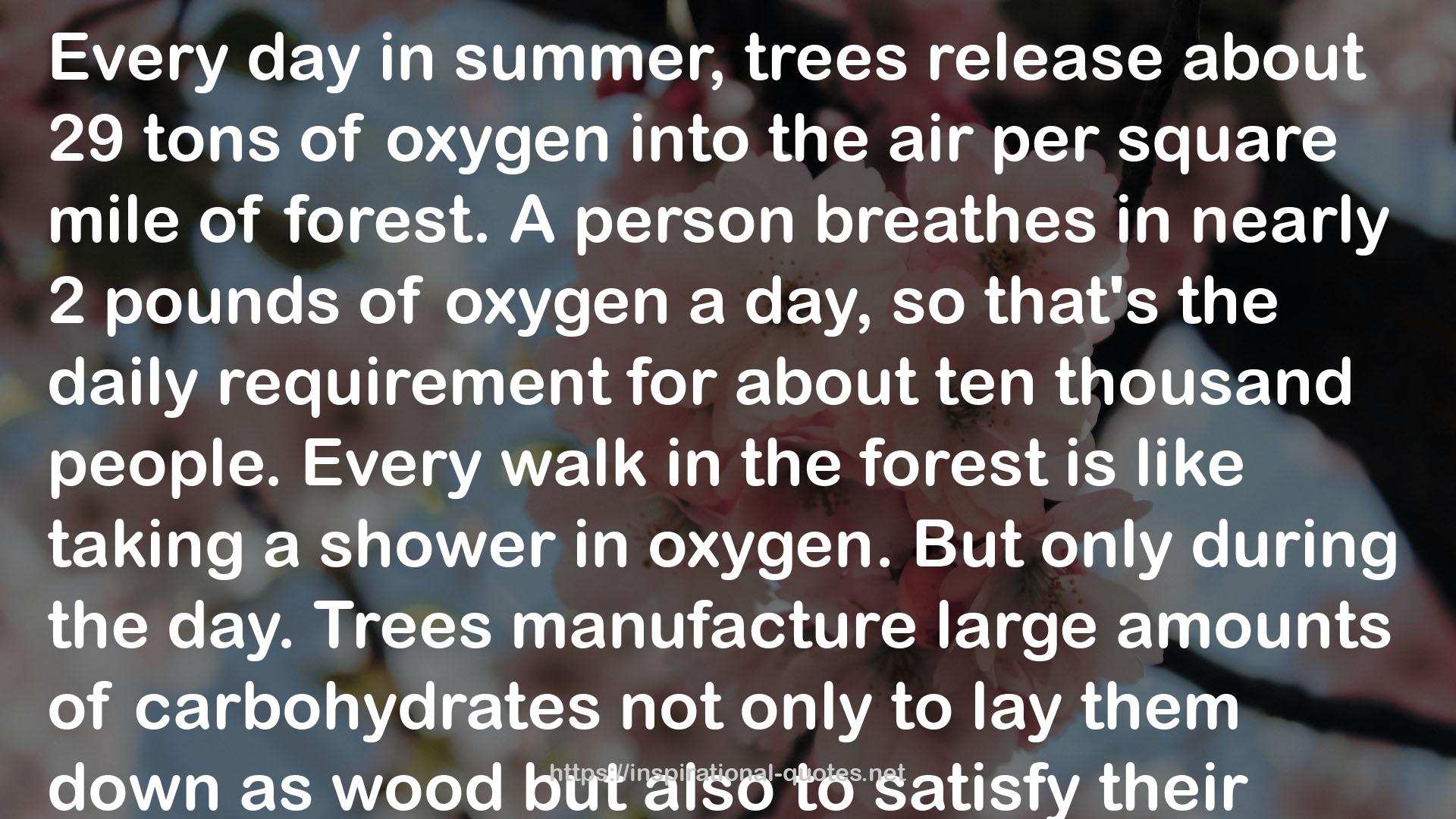" Every day in summer, trees release about 29 tons of oxygen into the air per square mile of forest. A person breathes in nearly 2 pounds of oxygen a day, so that's the daily requirement for about ten thousand people. Every walk in the forest is like taking a shower in oxygen. But only during the day. Trees manufacture large amounts of carbohydrates not only to lay them down as wood but also to satisfy their hunger. Trees use carbohydrates as fuel, just as we do, and when they do, they convert sugar into energy and carbon dioxide. During the day, this doesn't affect the air much because after all the additions and subtractions, there is still that surplus oxygen I just mentioned. At night, however, the trees don't photosynthesize, and so they don't break down carbon dioxide. Quite the opposite, in fact. In the darkness, it's all about using carbohydrates, burning sugar in the cells' power-generating stations, and releasing carbon dioxide. But don't worry, you won't suffocate if you take a nighttime ramble! A steady movement of air through the forest ensures that all the gases are well mixed at all times, and so the drop in oxygen near the ground is not particularly noticeable. "
― Peter Wohlleben , The Hidden Life of Trees: What They Feel, How They Communicate: Discoveries from a Secret World
